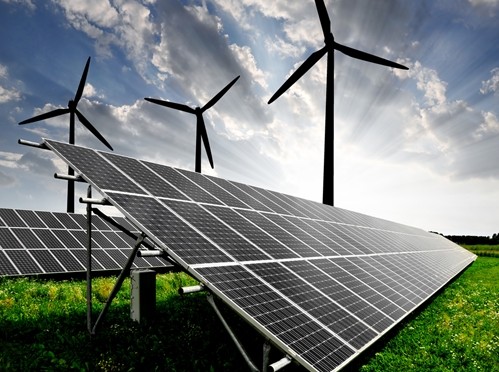A great piece of news came downwind from The New York Times: Solar and wind energy are finally starting to become competitive with conventional, environment-damaging fuels such as coal and natural gas.
For the first time ever, it's now possible to produce renewable energy at a cost equal to coal. In some markets, "green" energy has been cheaper than the dirty fossil fuels. A handful of companies have signed contracts, called power purchase agreements, for solar and wind at prices below that of natural gas, particularly in the Southwest and Great Plains.
So, what does this have to do with you? Quite a lot in fact. And it will affect your children and grandchildren even more than you. Global experts point out that climate change is a stark reality that all citizens of the earth face today – not in 30 years or next week, but now. According to a White House report, California has been experiencing devastating droughts, low-lying U.S. cities such as Miami already experience high flooding, and farmers across the country are having to reassess their crops to confront the weather alterations.
According to The Commonwealth Scientific and Industrial Research Organisation, Australia's national science agency, global sea levels rose about 6.7 inches in the last century, and the rate in the last 10 years is almost double that of the last century. What's more, the period from 2001 to 2012 was warmer than any previous decade in every region of the U.S. on record.
Fossil Fuels
One of the leading contributors to this climate change is fossil fuels.
"The burning of coal, oil and gas, and clearing of forests have increased the concentration of carbon dioxide in the atmosphere by more than 40 percent since the Industrial Revolution, and it has been known for almost two centuries that this carbon dioxide traps heat," the researchers wrote in the White House Report, titled "National Climate Assessment."
A Change in Dialogue
As a result, even over the last year, the climate debate has shifted from "Is climate change real?" to "What are we going to do about climate change?" As solar and wind energy become more viable, we can start cutting our output of fossil fuels and work toward greater sustainability.
This paradigm shift directly aligns with the views of Ilchi Lee, The New York Times' bestselling author and a proud advocate of a peaceful, sustainable world. Lee aims to reduce our carbon footprint and leave a legacy of the world better than how we found it.
That's why the solar energy shifts are so important.
Earlier this year, Austin Energy in Texas signed a deal to create 20 years of output from a solar farm at less than 5 cents a kilowatt-hour. In Oklahoma, American Electric Powered tripled the amount of wind power it had initially sought after recognizing how low the bids came in. These are only some of the examples. However, at least for the near future, the low prices will not allow wind and solar farms to supersede power plants, experts concede.
Khalil Shalabi, vice president for energy market operations and resource planning at Austin Energy, suggested the falling prices of renewable energy is still a great sign.
"Renewables had two issues: One, they were too expensive, and they weren't dispatchable," Shalabi told The New York Times. "They're not too expensive anymore."
